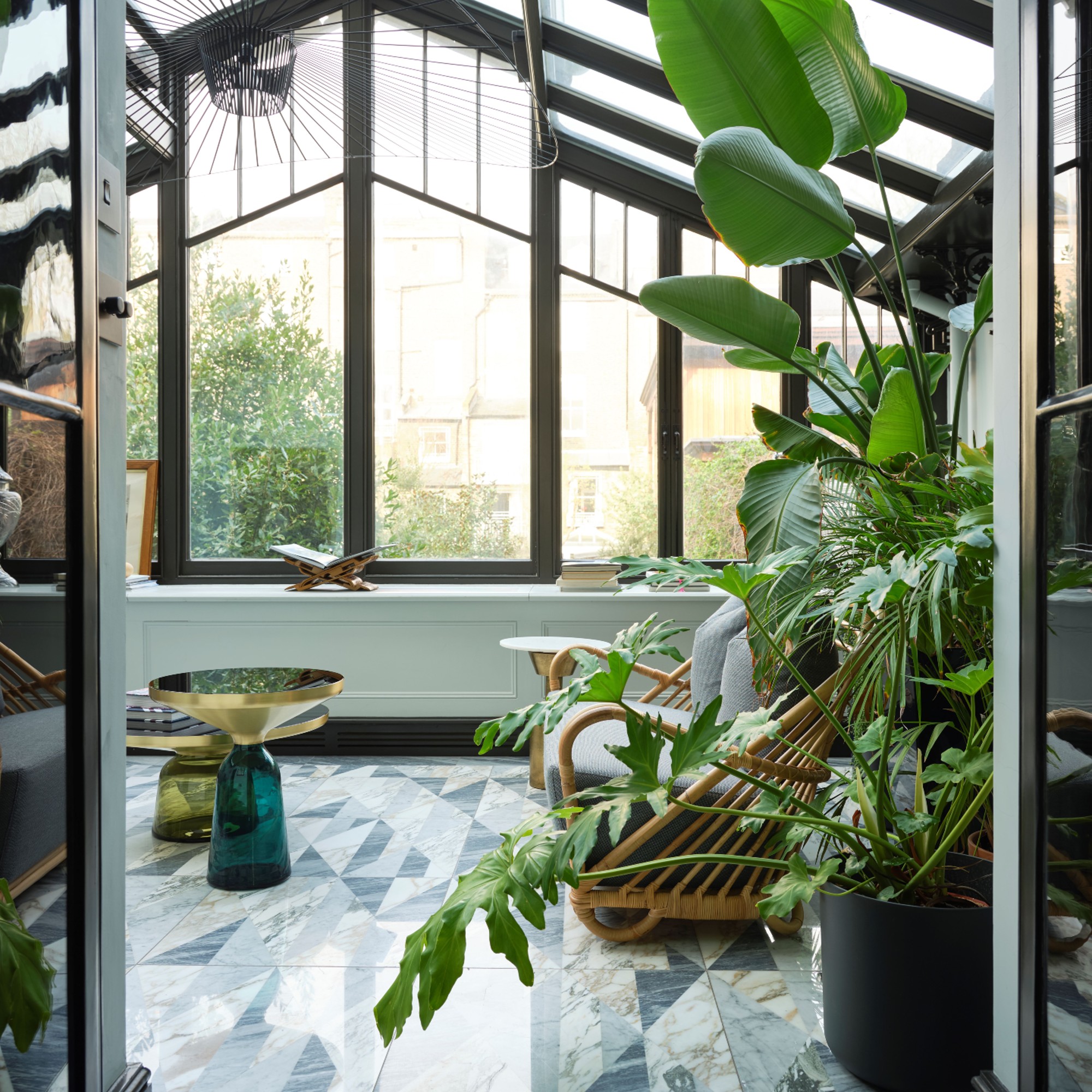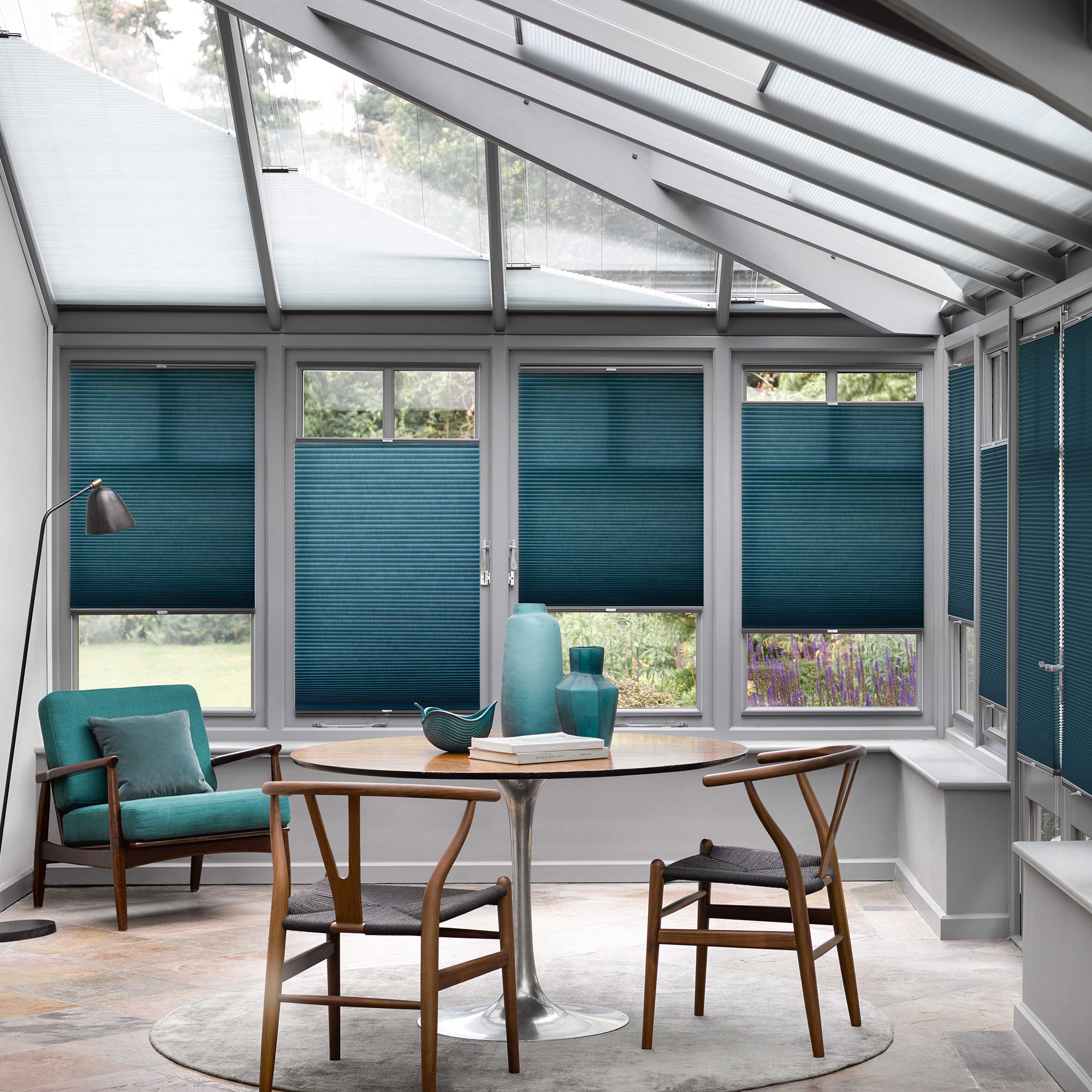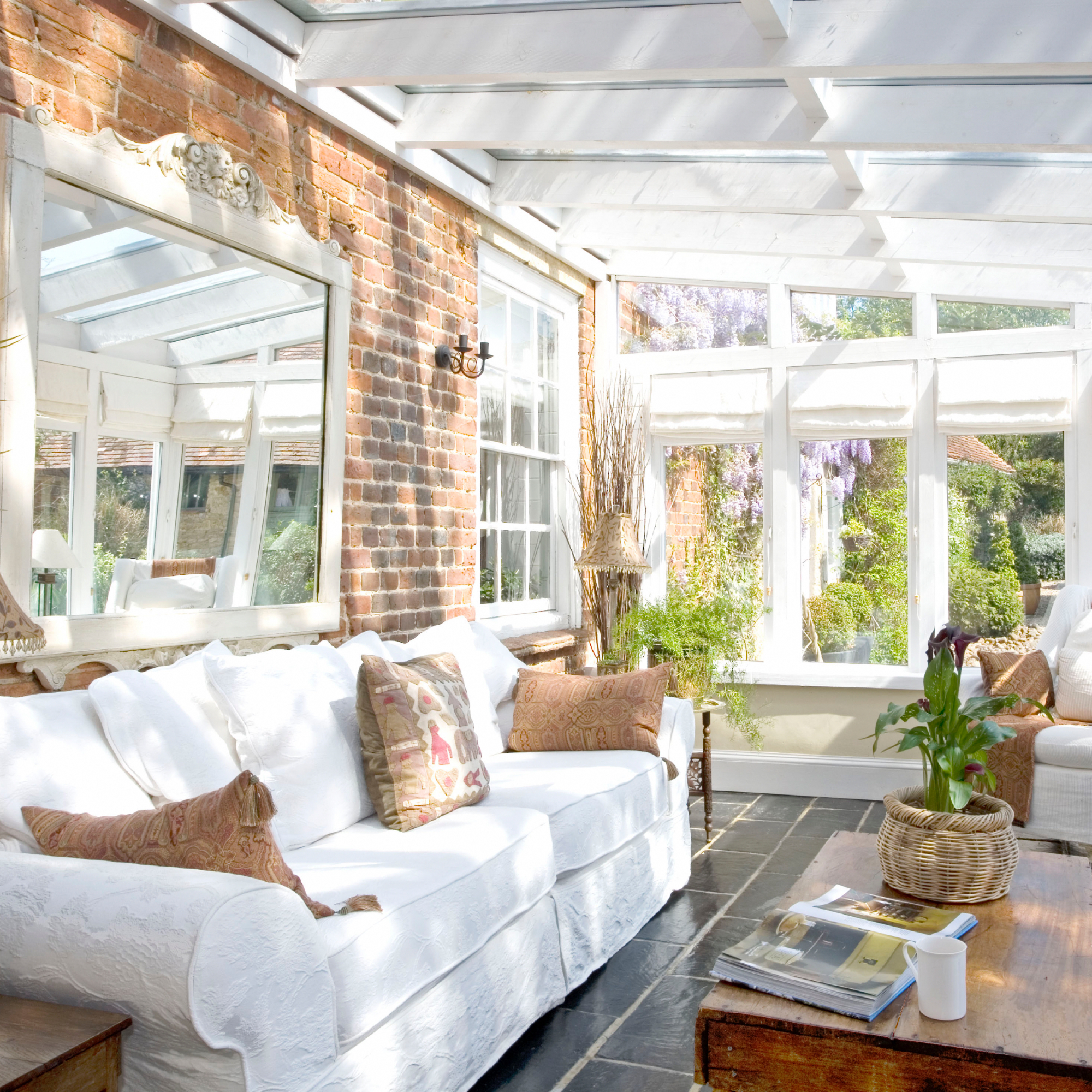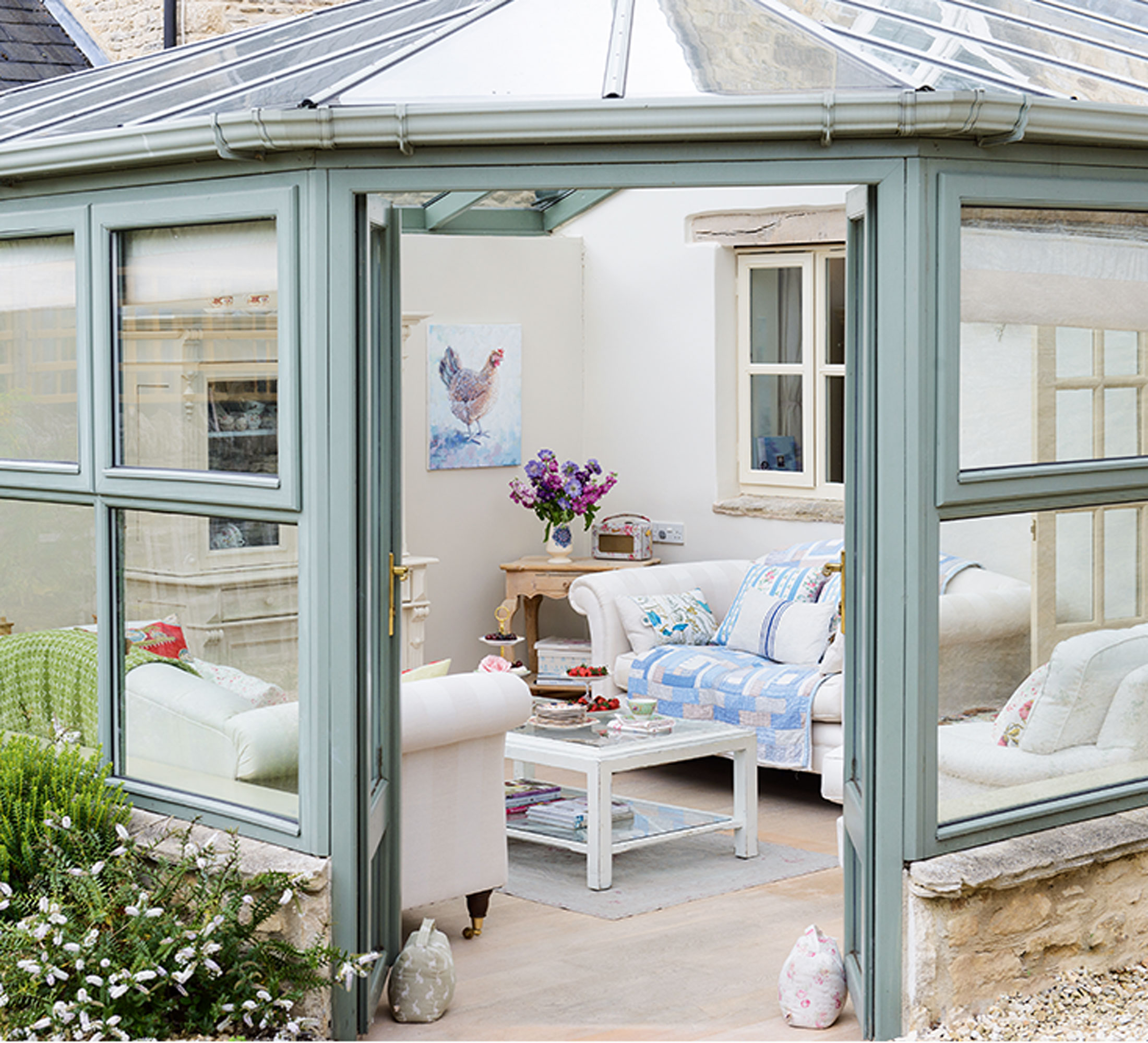
The perfect conservatory should not only provide your home with a sun-drenched bonus room, but a functional space you can enjoy all year round. However, with a couple of conservatory design mistakes, these spaces can end up as unusable dumping grounds.
The biggest obstacle to overcome when planning conservatory ideas is that often these rooms get too hot in summer, but too cold in winter. This is an instant recipe for creating a space that isn't used to its full potential, becoming only occasionally habitable when the conditions are just right.
But whether you’re at the early stages of planning a build or have had one for years, we can help you identify conservatory design mistakes to help avoid this fate befalling your conservatory.
Conservatory design mistakes to avoid
The temperature fluctuations and humid conditions within the glass structures are where many of the issues stem from, so when looking for conservatory interior ideas, it’s vital these aren’t overlooked.
What works inside your home won’t automatically work in the extension. And, according to the experts we spoke to, whether you’re working with a huge orangery or a more compact small conservatory, the most common conservatory design mistakes are the same no matter the size.
Here’s how to avoid finding yourself stuck with a garden room full of issues.
1. There’s such a thing as too much light

Natural light is a major conservatory selling point, but depending on what you intend to use the space for, all that gorgeous light can start to cause problems, not just by making the room unbearably hot, but by causing glare.
It’s important to carefully consider how you’ll utilise your conservatory and whether screens need to be factored in, such as a TV in a living space or a computer in a home office.
‘The overhead sun on cloudless summer days can make glare a major consideration when it comes to glass roofs, so certain tints or coatings may be required to combat this,’ says Mervyn Montgomery, founder and joint director of Hampton Conservatories.
Films and tints can be applied professionally or if you’re adept at DIY, you can purchase them online at somewhere like Purl Frost to add yourself.
2. Stay away from impractical flooring

Don’t be tempted to use the same hardwood from your home in your conservatory to tie the spaces together. Conditions in your conservatory are very different to those within your home.
‘Temperature fluctuations, moisture, and exposure to sunlight can leave some conservatory floors looking tired,’ Mike Whitfield, interiors expert at Lusso tells us, ‘Solid hardwood can expand and contract with changes in temperature and humidity, leading to warping or cracking. While laminate flooring is durable and easy to maintain, it can also be affected by moisture and temperature changes’.
Instead, Mike suggests porcelain tiles as a conservatory flooring idea. He explains, ‘They’re the better option offering great resistance to heat damage and bright sunlight will not damage or discolour the tiles. They even work well with underfloor heating.’
3. Be careful with wooden shutters

If your budget will allow, it can be very tempting to go for wooden shutters in your conservatory since they not only look super chic and expensive, they’re also sturdy and assist with energy efficiency. However, they’re not always the best option, again because of the demanding conditions of conservatories potentially causing wooden shutters to expand.
But fear not, you can get the look without the risk of damage. Lisa Cooper, head of product at Thomas Sanderson says, ‘Vinyl shutters are a fantastic choice. They offer the beauty of a wood shutter but with the practicality of withstanding the bright sunlight and potential humidity of a conservatory. They won’t warp or fade, ensuring long-lasting beauty.’
Brands such as Blinds2Go offer a large range of beautiful wood-look vinyl shutters that will work as conservatory blind ideas.
4. Don’t just stick to ‘conservatory furniture’

Gone are the days of wicker and cane being the only option for conservatories. Though these materials can still be ever-so-stylish in their own right, they often don’t offer the most practical solutions if you want a versatile room. ‘Create a space you and your whole family can enjoy all year round with a sofa that’s large enough to seat all of your loved ones,’ Caron Grant, brand manager at Bridgman says.
Whilst it may seem strange to add cosy, homely pieces to what is typically thought of as a sun room, if you want to make use of your conservatory 365 days a year, picking the best sofa for the space is the way to go.
‘Whether you’re snuggling up with some hot chocolate in the winter, enjoying warm summer evenings playing games with your doors open, or simply spending some quality time relaxing together, a large L-shaped sofa will play the perfect host for your seasonal activities,’ Caron says.
5. Avoid the space looking busy and cluttered

Your conservatory might have a ton of different uses, an office, chill out area, dining room, playroom… before you know it, it can end up looking jumbled.
‘Clutter immediately makes a room look messy and, even with a very expensive set of furniture, the effect is cheapened by there simply being ‘too much’. It’s really important to make sure that what you buy fits into the room, without looking too big,’ says Mark Stewart, director of Desser & Co.
Think carefully about zoning the space if it’s used for a variety of activities. An office area could be marked with a rug under the desk and a couch can create a border if placed correctly, separating the working and living area.
Storage is also vital for keeping the area looking spacious and uncluttered. Look for versatile conservatory furniture ideas such as a storage ottoman that can work as a coffee table, footrest or additional seating. And a storage sofa that can be lifted to hold extra blankets, cushions or even toys. You could also consider going bespoke and having a joiner build window seating or hidden cabinetry.
6. Don’t fall into the neutrals trap

Finally you have a room that’s light and airy, of course you’re tempted to keep it that way by opting for all white/cream serene tones, but that can very quickly leave a conservatory looking flat and devoid of personality.
Ellie Kennedy, interior design expert at 247 Blinds explains you should instead consider taking inspiration from the views outside of the conservatory and tying it into the vibe inside. ‘Naturally, conservatories connect you with nature, providing a versatile space for indoor-outside living therefore it’s a no-brainer to decorate with colours and patterns that convey this,’ Ellie says.
‘Layer in shades of green in the form of furniture, soft furnishings and accessories,’ she continues.
And if green isn’t your thing, Ellie suggests looking to your last holiday for inspo. ‘There is a lot we can learn from the style of those living in sunnier climates that translates into conservatory design. Mediterranean style often features warm, earthy tones including shades of terracotta, ochre, sandy beige, and azure blue.’
7. Watch out for materials that fade

The last of the conservatory design mistakes to avoid is one that’s often overlooked, but could end up costing you a fortune if you don’t consider it. Ellie advises that before splashing the cash on a beautiful couch or stunning dining table, remember that the harsh sunlight could fade materials that are not designed to withstand it.
‘Opt for hardwearing materials in conservatories to keep them looking fresh and to prevent the need to regularly replace them which can be costly,’ Ellie says. If you already have all the furniture you need and aren’t sure if it will fade or not, buy UV protective spray, available at Lakeland for £8.99.
FAQs
What are the pitfalls of a conservatory?
The selling point of a conservatory can also be the main pitfall. All that glass bringing the outside in makes conditions temperamental depending on the weather and getting the light exposure and heat levels right with window dressings can be tricky and costly. Lisa, from Thomas Sanderson says, ‘Conservatory windows come with unique challenges. They often have awkward angles and unusual shapes, and the horizontal roof design requires specialist blinds and expert fitting.’
So make sure there is enough wiggle room in your budget for the correct window fittings before committing to a conservatory.
What not to put in a conservatory?
If the roof of your conservatory is not tinted, certain plants such as orchids and peace lilies may struggle under the glare of direct sunlight. The same can be said for electronics that are not designed to withstand high temps and humidity.
Just like heat sensitive plants and appliances, the wrong flooring is also a no-no. ‘Conservatory flooring needs very careful consideration as it’s expensive to replace if you get it wrong,’ Mervyn from Hampton Conservatories says.
‘Although modern conservatory designs use new technologies and building techniques to maintain a cool ambient temperature inside, the choice of flooring can make a big difference. Opting for a naturally cooling material, like porcelain tiles, can reduce the risk of the floors heating to an unmanageable level.’







